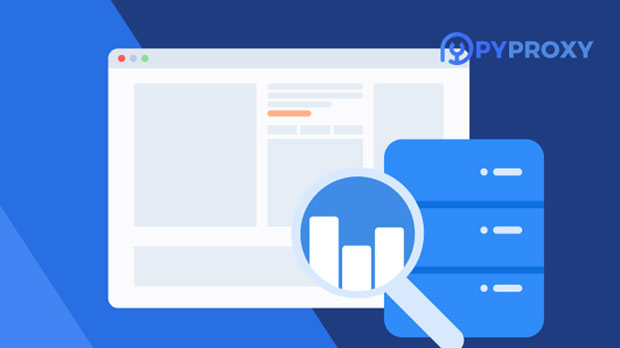Video scraping has become an essential technique in various industries, from content aggregation to data analysis. However, when scraping videos over the internet, one must consider the protocol through which the data is accessed—HTTP and HTTPS. These protocols influence how proxy servers function during video scraping, impacting data retrieval speed, security, and accessibility. HTTP, being unencrypted, leaves data exposed during transmission, whereas HTTPS provides an encrypted channel, ensuring security and integrity. Understanding the differences between these two protocols and their impact on video scraping is crucial for optimizing performance and ensuring data security. This article will analyze the role of these protocols in video scraping and their influence on various aspects of the process. The Basics of HTTP and HTTPS ProtocolsBefore diving into the specifics of video scraping, it's important to understand the basic differences between HTTP and HTTPS.1. HTTP (HyperText Transfer Protocol): - HTTP is an unsecured protocol used to transfer data over the internet. - It does not encrypt the data sent between the client and the server, which means the data is vulnerable to interception during transmission. - Although faster due to the lack of encryption overhead, it poses a risk to privacy and security.2. HTTPS (HyperText Transfer Protocol Secure): - HTTPS is an extension of HTTP, but with added security. - It encrypts the data using SSL/TLS protocols, ensuring that the information exchanged between the client and the server remains private. - While HTTPS requires additional processing for encryption and decryption, it provides significant security benefits.Understanding these protocols is essential for evaluating how they affect video scraping operations.Impact of HTTP and HTTPS on Video ScrapingVideo scraping involves extracting video content from websites using automated bots. Whether using HTTP or HTTPS to access the target website will greatly influence the scraping process in several ways.1. Security and Privacy Concerns- HTTP: - When scraping videos over HTTP, there’s a significant risk of data interception. Since HTTP doesn’t encrypt data, any video content, credentials, or user data being transferred is exposed to potential hackers or third-party surveillance. - Such exposure could lead to sensitive information being compromised, which is a concern for both the scraper and the website being scraped.- HTTPS: - HTTPS, on the other hand, ensures data encryption, making it highly secure for scraping activities. - With HTTPS, even if the connection is intercepted, the data is encrypted and unreadable, making it more challenging for attackers to gain access to sensitive information.For video scraping, this is especially important when dealing with personal data or accessing premium content that is restricted to authorized users.2. Server and Proxy Compatibility- HTTP Proxies: - HTTP proxies are commonly used for video scraping due to their lower processing requirements and faster data retrieval speeds. - However, not all websites are configured to support HTTP proxies, particularly when they handle sensitive information. Websites with HTTPS protocols may not allow scraping through HTTP proxies, limiting the success rate of scraping attempts.- HTTPS Proxies: - HTTPS proxies, while slower due to encryption overhead, allow for more seamless access to secure websites. - Many modern websites use HTTPS as their standard, especially those with login systems or secure payment gateways. To successfully scrape video content from such sites, using an HTTPS proxy is often necessary. - HTTPS proxies also provide a higher level of anonymity, ensuring that the identity of the scraper remains hidden during the data extraction process.3. Scraping Speed and Efficiency- HTTP: - HTTP is generally faster than HTTPS for video scraping because it does not involve encryption, meaning that the server can respond more quickly to requests. - This makes HTTP an attractive option for scraping large volumes of video content, especially when security is not a primary concern.- HTTPS: - HTTPS introduces additional overhead due to encryption and decryption processes, which can slow down the scraping operation. - However, the slower speeds may not be a significant issue for smaller-scale scraping operations or when working with sensitive data that requires encryption.For video scraping operations that require speed and efficiency, HTTP proxies are often preferred. However, HTTPS is mandatory when accessing secure video sources.4. Legal and Ethical Considerations- HTTP: - Scraping via HTTP can raise legal and ethical concerns, especially if the scraped content is used inappropriately. Since HTTP does not secure data, it may violate privacy regulations or terms of service of the websites being scraped. - Websites might actively block or restrict HTTP traffic, making it harder to maintain consistent scraping operations.- HTTPS: - Ethical scraping is often easier with HTTPS, as it demonstrates respect for data security and integrity. Scraping via HTTPS ensures that data is handled securely, reducing the likelihood of breaches or unauthorized use. - Moreover, some websites require HTTPS connections for content access, especially those with subscription-based models or content protection mechanisms.5. Impact on Proxy Rotation and IP Management- HTTP: - In some cases, using HTTP proxies can lead to easier rotation of IP addresses, as these proxies are less likely to be blocked compared to HTTPS proxies. - However, since HTTP is not secure, it can result in a higher number of IP address bans if the scraping activity is aggressive or violates website policies.- HTTPS: - HTTPS proxies are more difficult to rotate, as they are often subject to stricter firewall and security rules. - Websites using HTTPS often have robust anti-bot measures in place, which can include detecting unusual proxy patterns. As a result, it can be more challenging to maintain a consistent IP address while scraping via HTTPS.ConclusionBoth HTTP and HTTPS proxy protocols have distinct advantages and disadvantages when it comes to video scraping. HTTP may offer faster speeds and less resource overhead, making it suitable for high-volume scraping where security is not a primary concern. However, it lacks encryption and could expose data to security risks.On the other hand, HTTPS provides enhanced security and privacy, making it essential for scraping from websites that handle sensitive information or employ anti-bot measures. Although it can slow down the scraping process, HTTPS ensures that data remains encrypted and secure during transmission.Ultimately, the choice between HTTP and HTTPS proxies depends on the nature of the video scraping task. For more secure scraping of sensitive content, HTTPS is the preferred option, while HTTP may be sufficient for faster, less critical data extraction. Understanding the strengths and weaknesses of each protocol will help video scrapers make informed decisions and optimize their operations accordingly.
Jul 03, 2025



































































